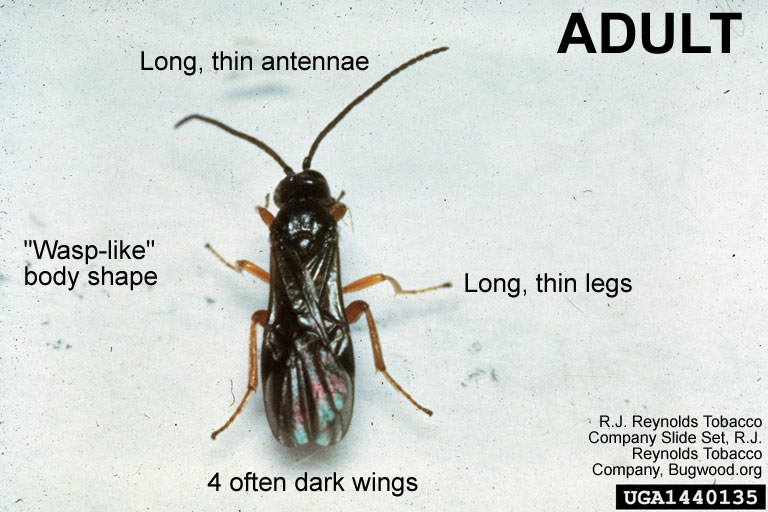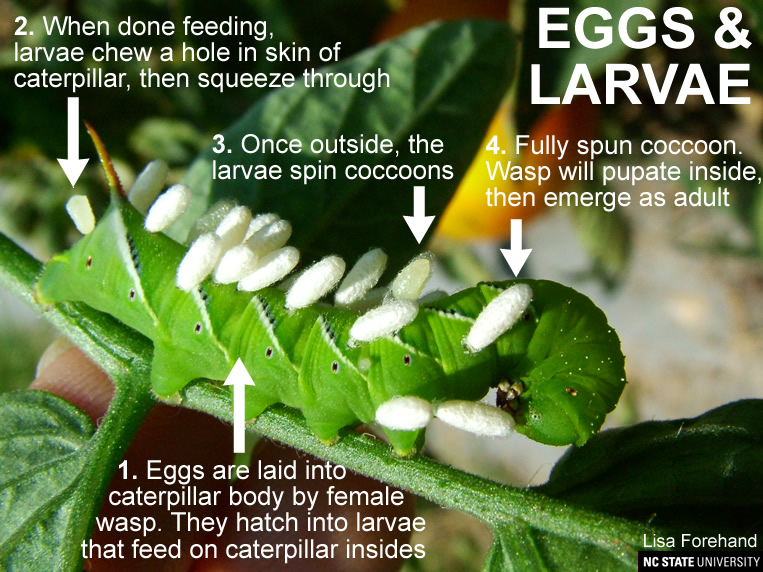Cotesia Wasp
go.ncsu.edu/readext?563375
en Español / em Português
El inglés es el idioma de control de esta página. En la medida en que haya algún conflicto entre la traducción al inglés y la traducción, el inglés prevalece.
Al hacer clic en el enlace de traducción se activa un servicio de traducción gratuito para convertir la página al español. Al igual que con cualquier traducción por Internet, la conversión no es sensible al contexto y puede que no traduzca el texto en su significado original. NC State Extension no garantiza la exactitud del texto traducido. Por favor, tenga en cuenta que algunas aplicaciones y/o servicios pueden no funcionar como se espera cuando se traducen.
Português
Inglês é o idioma de controle desta página. Na medida que haja algum conflito entre o texto original em Inglês e a tradução, o Inglês prevalece.
Ao clicar no link de tradução, um serviço gratuito de tradução será ativado para converter a página para o Português. Como em qualquer tradução pela internet, a conversão não é sensivel ao contexto e pode não ocorrer a tradução para o significado orginal. O serviço de Extensão da Carolina do Norte (NC State Extension) não garante a exatidão do texto traduzido. Por favor, observe que algumas funções ou serviços podem não funcionar como esperado após a tradução.
English
English is the controlling language of this page. To the extent there is any conflict between the English text and the translation, English controls.
Clicking on the translation link activates a free translation service to convert the page to Spanish. As with any Internet translation, the conversion is not context-sensitive and may not translate the text to its original meaning. NC State Extension does not guarantee the accuracy of the translated text. Please note that some applications and/or services may not function as expected when translated.
Collapse ▲- Common Name: Cotesia Wasps
- General Category: Parasitoid
- Taxonomic Classification: Hymenoptera: Braconidae
- Scientific Name: Cotesia congregata
Description
These wasps are common parasitoids of hornworm caterpillars that are often seen in home gardens. Adult females inject their eggs into hornworm caterpillars. The eggs soon hatch into grub-like larvae that feed a week or two on tissues inside the hornworm hosts. Their small size allows many larvae to be accommodated by each caterpillar. When they are done feeding, the larvae chew small holes in the skin of their host and squeeze through so they can spin silk cocoons and pupate attached to the outside of their still-living host. These cocoons are often mistaken for eggs. After this point the caterpillar feeds very little, and can be viewed as a nursery for these beneficial parasitoid wasps. Within about a week, the adult wasps emerge, and a day or two after that the caterpillar host dies.


Identification
Review the images for tips on how to identify these predators.
Adults
These parasitoid wasps usually have very long, thin antennae, four usually dark wings, long, thin legs, wasp-like bodies. Braconid wasps are closely related to the ichneumonid wasps that also attack caterpillars. These two groups have very similar appearances, but can be separated by the pattern of veins in their wings. When they alight on a plant, notice they have four wings (as opposed to only two in flies).
Larvae
Grub-like in appearance, hidden inside their host insect until they are done feeding and emerge to pupate. See video of another Cotesia species larvae inside a caterpillar.
Value in Pest Management
These parasitoids are common natural control agents of several native hornworm caterpillars, including tobacco and tomato hornworms. They undoubtedly contribute to population regulation of these pests. Adults will feed on and benefit from nectar-producing flowering plants, and have been considered in some conservation biological control studies. They are not sold commercially.
Origin and Distribution
Native, throughout eastern North America.


